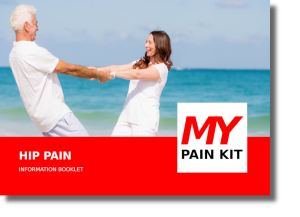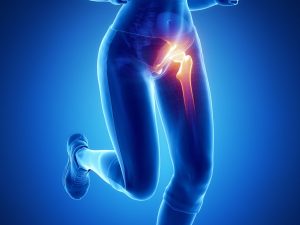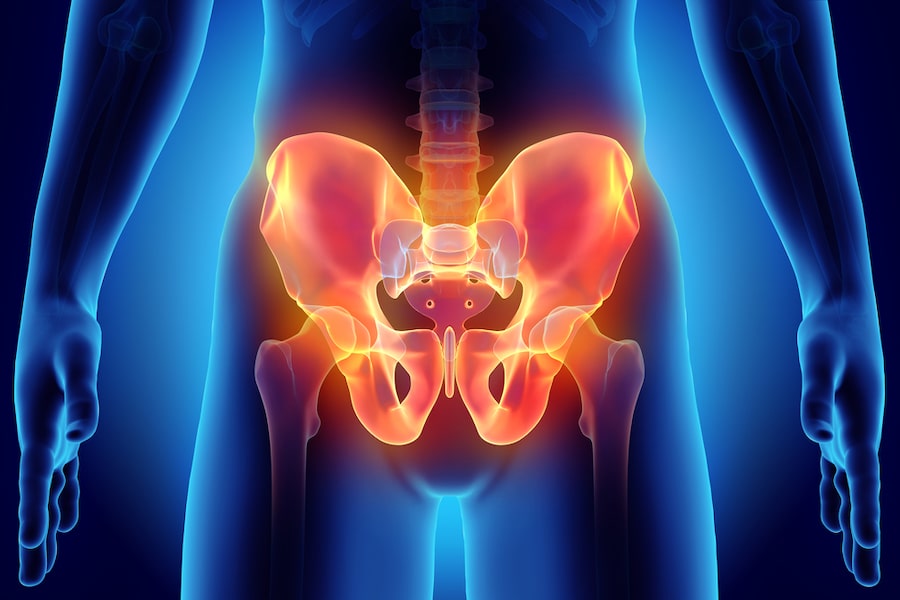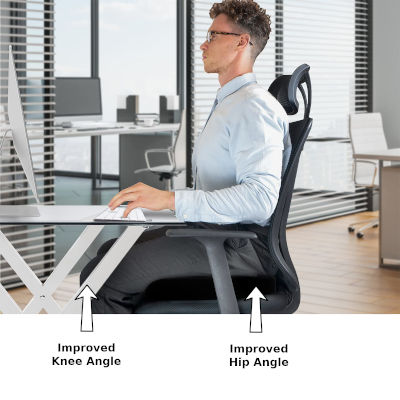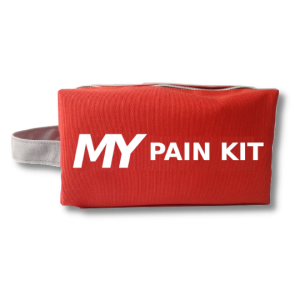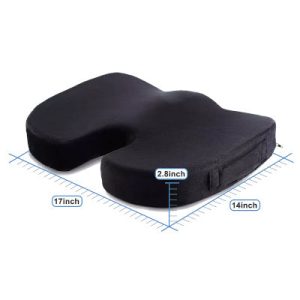Hip Pain often starts as a mild discomfort, which goes away with some basic movement exercises. But what happens if it gets worse over time – how can you know if the condition getting serious?
In This Article:
Why Is Your Hip So Painful?
Hip pain is a hugely common complaint that presents to health care practitioners such as Physiotherapists, Chiropractors, Osteopaths and physical therapists. Hip pain can occur suddenly or be ongoing persistent pain. The pain is usually in the hip area or low back area on one side. It can also cause groin pain, knee pain and leg pain and can cause huge amounts of stress and anxiety.
Hip Joint Deterioration
Hip pain can occur at any age but most common in active people or as people get older. It’s a weight bearing joint that can take huge amounts of stress and tension but overtime as the person gets older, exercise levels fall off and the strong hip muscles decondition.
As the muscles get weaker, the joint function deteriorates increasing the chances of hip osteoarthritis. Less exercise also increases your body weight putting further stress on the joint leading to more damage that can lead to pain, stiffness and inflammation.
Increased levels of belly fat can also cause increased levels of inflammation in the body that can further increase your pain levels. Other names for Osteoarthritis is’ wear and tear’ or degenerative disease that affects the joints ability to move freely and cause pain and inflammation.
Hip Pain & Immobility
Having hip pain or any joint pain for that matter can lead to a vicious circle of pain and immobility. Lack of movement, no exercise, body weight and occupation all predispose you to hip pain and hip osteoarthritis.
This pain can have a real negative affect on your mindset and sleep patterns that can affect your motivation to exercise causing even greater pain, stiffness and discomfort. This is true for most pain issues and needs to be overcome.
Treating Hip Pain
The trick is to start small and gradually increase your activities. Even a short walk to start. Maybe a session of heat and ice. The key is to just make a start. These small changes will help develop a better attitude towards your pain and help build confidence to exercise and get better outcomes for your hip. As your pain decreases and it will, then you can be more focused on the movement, stretching and strengthening exercises.
These exercises will increase your flexibility and strength of the muscles around the hip further decreasing your pain. As your pain levels drop you can increase your exercise levels helping to drop your body weight ,decreasing the pressure on the hip joint. This will lead to better sleep patterns, decreased stress and mental health.
As I said, the key is to make a start. Learn as you go.
Difference Between Hip Pain and Back Pain
A lot of the time low back pain can be confused with hip pain and vice versa, so that’s why it’s important to have a full history and examination by your healthcare practitioner. Often the symptoms will overlap and can be confusing to both patient and practitioner.
Because your hips, lower back and pelvic joints (sacroiliac joints) are so closely located together it’s easy to confuse your symptoms.
The Link Between Groin and Hip Pain
Very often, Groin Pain can go hand-in-hand with Hip Pain. The proximity of your hip to your groin means that it is something we look for, and a very big sign that your hip pain is to be taken seriously. However, it can sometimes confirm that the Hip is actually the source of the pain, and that the pain is being radiated into the groin, or even downwards towards the knee!
Obviously, the main indicator is the pain in and around the hip joint itself. Further pain can be felt in the lower back, so between the hip, groin and back – it can often be very difficult to get a full diagnosis of what’s really happening without a scan or MRI.
The main thing to remember is that if you are having hip pain, along with other pains – this is something that needs to be taken seriously – with a visit to your Healthcare Specialist.
6 Indicators Of Hip Problems:
- Groin pain can often be an indicator of Hip issues. The hip is situated behind the groin and pain in this area is usually a good indication that the hip is the source
- Pain in or around the hip joint that may refer to the knee at the front is also a good indication the hip is the culprit
- Often the patient will walk with a slight limp
- Pain is gradual and worsens when walking and eases with rest, another strong indicator of hip problems
- Decreased range of movement is nearly always associated with hip osteoarthritis
- You might find it hard to put your socks on or wash your feet.
Each Kit contains a Hip Support Cushion/Brace!
Hip Osteoarthritis
All joint pain should be considered in relation to Osteoarthritis – as we have shown elsewhere – Osteoarthritis can progressively get worse until it manifests itself as serious pain in the body.
An Osteoarthritis cause of Hip Pain can often be felt with additional pain across the buttocks, upper thighs and knees. Limping and an unbalanced gait (over-compensating for the pain on one side!) can also be very common.
Above all, if you are experiencing the pain, be careful you don’t subconsciously reduce the range of motion of the hips – which can make you avoid the very movement exercises required to help your condition. Again – this should only be done with approval of your medical professional, but you really need to keep yourself moving once you have had your Osteoarthritis diagnosis.
Frequently Asked Questions:
Osteoarthritis can cause Hip Pain, seemingly without an underlying injury. You can gradually feel the pain increase over time, and it’s a good indication you need to get a doctor’s opinion.
If you’re active, yet have foot, knee or back pain – these can also contribute to Hip Pain, because they are all connected.
Pain doesn’t have to be at the outside of your hip, or deep in the joint. It can appear in the following locations too:
- Groin Area
- Lower Back
Any pain which radiates or spreads from the original injury location is an indication you need to get a scan.
No, it doesn’t automatically mean you need a hip replacement. You need a full assessment of the pain, and a diagnosis so you can begin working with the underlying issue. Even if you have Osteoarthritis, it can benefit from treatment, and regular rehab exercises such as Movement, Stretching and Strength Exercises.
Yes. If your knee is injured, you may over-compensate, and change your gait to ease the pain in your knee. If you are engaged in sport, playing while injured would make this much worse.
Very often, knee issues and even foot issues can translate into Hip Pain because your leg bio-mechanics are all linked. Get your legs in good shape with Movement, Stretch Exercises and Strength Exercises and never play while injured!


